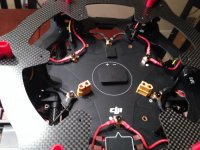Mojave
Member
I have been reading forum posts for about a year, looking at current threads and researching the archives. I have seen mention of soldered connections versus mechanical connections; some have argued that mechanical (crimped) connectors last longer than solder joints on our vibration prone UAVs.
For the life span of our rigs:
- does anyone have strong feelings about which is best and why?
- has anyone observed solder joints failing on their UAV?
For the life span of our rigs:
- does anyone have strong feelings about which is best and why?
- has anyone observed solder joints failing on their UAV?

